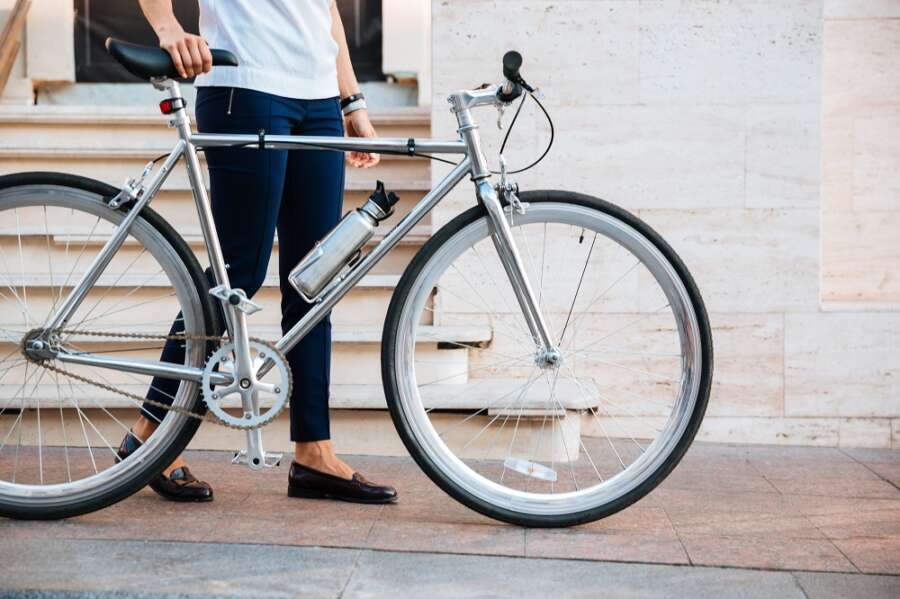
If you want to start cycling to gain all the amazing benefits of it, but the investment is putting you off, the Cycle to Work scheme might be just what you need. Keeping healthy doesn’t have to come at a high cost, and the scheme is proving that.
Here, with some insight from the road bike helmet division at Leisure Lakes Bikes, we take a look at what the Cycle to Work scheme actually is and how you can benefit from it too.
Promoting healthier journeys to work
Cycling is a massive health booster, and the UK government is realising that. In order to promote healthier journeys to work and reduce road congestion and pollution, the government introduced the Cycle to Work scheme in January 1999 as part of the Finance Act 1999.
Since then, the scheme has had well over 1 million people across the UK benefit from it.
But the initiative has recently been seen in a new light due to a major global event. During the COVID-19 pandemic, there has been a surge in cycling, with an increase of as much as 200% on the weekend and 100% on the weekdays.
People want to keep the cycling momentum going and incorporate the activity into their daily life. Research by Cyclescheme shows that 51% of employees want to cycle to work. But there is one thing that is getting in their way – affordability. The same research shows that 40% of would-be cyclists don’t see cycling as accessible and affordable. That’s where the Cycle to Work scheme can help.
How does the Cycle to Work scheme work?
The main purpose of the Cycle to Work scheme is to reduce the price you pay for a bike that you use to commute. In essence, your employer ‘buys’ a bike for you to ride, which you then ‘hire’ from them through salary sacrifice.
First, check with your employer to ensure they’re partaking in the scheme. If they’re not, it might be worth highlighting the benefits for both sides. You’re paying less for a bike, while your employer can save money on paying national insurance contributions for an employee who partakes in the scheme (13.8% of the bike’s value).
Here is how it works:
- You choose a bike and accessories, such as a road bike helmet, front and rear lights, and cycling apparel, from one of the over 2,000 bike retailers that are signed up for the scheme.
- You contact your HR department, and they issue you a certificate detailing the total amount, which you then send to the retailer as payment.
- The amount will be deducted from your gross salary across several months.
- At the end of the payment period, you can become the bike owner by paying a fair market value to keep it.
The fair market value you pay to own the bike depends on the original price and how long you’ve been using it. Below is a breakdown outlined by BikeRadar of what you will pay at the end of the scheme to own the bike.
| Bike usage | If initial price is less than £500 | If initial price is over £500 |
| 1 year | 18% of the original value | 25% of the original value |
| 4 years | 3% of the original value | 7% of the original value |
| 6 years or more | 0% of the original value | 0% of the original value |
For example, if the initial cost for the bike and accessories is £1,000 and you’ve used it for a year, you will pay 25% of the original value, which is £250. However, if you use it for four years, you will only pay 7%, which equals £70. For more than a six-year-old bike, you will pay 0% or £0.
How much money can you save?
When you loan a bike through the Cycle to Work scheme, you’re not paying tax and National Insurance contributions on the monthly fees. That means the salary sacrifice comes from your gross salary, not your net salary.
If you were to purchase outside of the scheme, you would spend much more due to tax. The savings vary based on the cost of the bike and accessories you choose and your tax bracket. For a basic rate taxpayer, you will save 33.25% of the purchase price, and for a higher rate taxpayer, you can save up to 43.25%.
The Green Commute Initiative calculator helps you find out exactly how much you will pay and save based on your annual salary and the total cost of the bike and accessories. Below is an example of a breakdown of using the scheme over the course of four years.
| Salary | £25,000 | £60,000 |
| Initial cost of bike and accessories | £1000 | £1000 |
| Net salary deduction over 12 months | £14.17 | £12.08 |
| Net cost of bike and accessories (excl. fair market value) | £680 | £580 |
| Saving on cost of bike and accessories | £320 | £420 |
| Total saving as percentage | 32% | 42% |
For example, if you’re earning £25,000 per annum and your bike package costs £1,000, you will be paying £14.17 each month over the course of four years. In order to gain ownership of the bike given that you’ve used it for four years, you will also pay £70 fair market value as per the fair market value table above. In total, you would have paid £750 for your bike package, meaning you’re saving £250 on the purchase. The savings are even bigger for a higher taxpayer bracket.
The Cycle to Work scheme is a great imitative to increase your cycling activity, especially if you don’t have time to get on a bike otherwise. So, hop on a bike and cycle to work!


